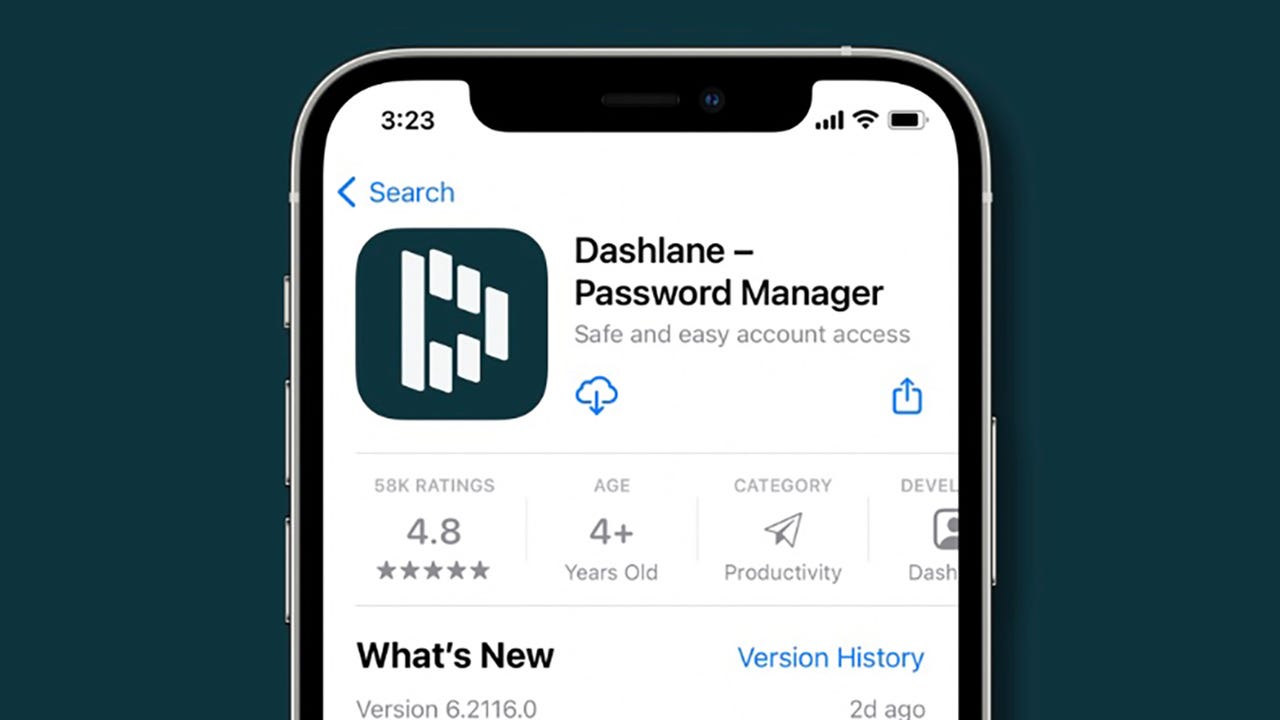
Revolutionizing Digital Security: How Dashlane Enables Logins Without a Main Password, According to ZDNet

Revolutionizing Digital Security: How Dashlane Enables Logins Without a Main Password, According to ZDNet

The tech industry has been trying to move more quickly and aggressively toward a passwordless future by developing other forms of authentication.
Dashlane
One of the downsides with most password managers is that you have to protect your account with a master password. And if that password is weak or simple, your account logins are more vulnerable. Now a new initiative from Dashlane aims to avoid the pitfalls of master passwords by giving you other ways to authenticate your account.
Due to be released over the next few months, Dashlane’s passwordless login technology will enable you to skip the master password and instead set up your account access with a four-digit numeric PIN and then supplement that with facial or fingerprint recognition.
Also: The best password managers to easily maintain your logins
After you enable your preferred authentication method, the necessary encryption keys will be securely transferred from your device to Dashlane, allowing you to use the same method to log into your account from any location or device.
Dashlane
Though most of the major password managers let you set up a PIN or biometric authentication, you typically still have to concoct a master password and then enter it from time to time. The more complex that password, the more difficult it may be to remember and type. But the simpler it is, the more susceptible it becomes to hacking or other types of compromise. Accessing your account with a facial or fingerprint scan is not only easier and quicker but is considered more secure than a password.
By first setting up your account with passwordless logins on one device, you can then access it on another device. Here, the technology will be designed to handle a couple of scenarios, according to Dashlane chief product officer Donald Hasson.
If you first set up Dashlane on a Windows PC or Mac and opt for the passwordless login, you can validate your access on an iPhone, iPad, or Android device by scanning a QR code displayed on your computer. If you first set up Dashlane on a mobile device and then wish to access it on a computer, the company will offer a universal device transfer process that prompts you for validation.
Also: How to protect and secure your password manager
What happens if you lose the mobile device that you use to authenticate your Dashlane account? To address this pitfall, Dashlane will introduce a mechanism to help users recover their data if they lose their device. For people who still use a master password, an account recovery key will also be available to let them gain access to their account.
The public beta of the passwordless logins will initially support iOS/iPadOS and Android users creating a Dashlane account, Hasson said. On the PC end, it will work with the Dashlane Mac Catalyst app and browser extensions via Touch ID and with Windows computers via Windows Hello biometric security. In this regard, the technology itself will leverage the WebAuthn standard in the browser and the authentication capabilities built into the operating system.
The tech industry has been trying to move more quickly and aggressively toward a passwordless future by developing other forms of authentication. One such method starting to take hold is the passkey, a technology spearheaded by the FIDO Alliance. Last week, Google rolled out support for passkeys as an alternative method for users to sign into any of their Google accounts.
However, the passwordless login process being introduced by Dashlane uses a process that’s separate and distinct from passkeys. (The company does already support passkey management across its various platforms.) To set up the new passwordless login system, Hasson said, Dashlane wanted a more agnostic solution than passkeys.
Also: Stop using your browser’s built-in password manager. Here’s why
One drawback is that the device-specific PIN used to set up your account is limited to four numeric digits, which could be as susceptible to compromise as a simple master password. In the future, Dashlane may consider other options for securing the account without a master password, Hasson said. But for now, the PIN will be the default authentication method backed by biometrics on devices that support facial or fingerprint recognition.
In the coming months, new Dashlane users will be able to set up an account on their mobile device without a password, Hasson added. Later in the year, the company will offer existing users the ability to convert to a passwordless login. Down the road, however, Hasson said that Dashlane sees a future where users will be able to access their accounts without a master password by choosing multiple methods, including PIN, biometrics, other logged-in devices, and passkeys.
ZDNET Recommends
The best smartwatches you can buy: Apple, Samsung, Google, and more compared
The 5 best VPN services (and tips to choose the right one for you)
The best Android phones you can buy (including a surprise pick)
The best robot vacuum and mop combos (and if they’re worth the money)
- The best smartwatches you can buy: Apple, Samsung, Google, and more compared
- The 5 best VPN services (and tips to choose the right one for you)
- The best Android phones you can buy (including a surprise pick)
- The best robot vacuum and mop combos (and if they’re worth the money)
Newsletters
ZDNET Week in Review
Too busy for a daily newsletter? ZDNET’s Week in Review delivers our editors’ picks of the week’s most important innovation and technology stories.
Subscribe
Also read:
- [New] Cutting-Edge Strategies for FB Live Broadcasts and Recordings
- [Updated] Exclusive Choice of Cost-Free Chat Apps + Desktop Viewing
- [Updated] In 2024, Asper's Secrets Soundscapes That Lull You to Sleep
- A Beginner's Roadmap to Navigating Through Windows Telnet Tools
- A Complete Guide: Restoring Lost Messages in WhatsApp
- Best Methods to Move Your WhatsApp Chats Between Android Devices
- Efficient Methods for Downloading and Sending High-Resolution Videos on WhatsApp: Compression Techniques Revealed
- Guide: Saving Your WhatsApp PDFs on an iPhone with Ease
- In 2024, Exploring Periscope's World Free Access & User Registration
- Migrating Your Chats and Media: A Step-by-Step Guide From Android's WhatsApp to iOS
- Navigating Content Sharing YouTube Standards Vs. Creative Commons
- Secure Your Messaging: Ultimate Guide to WhatsApp Passwords on iOS & Android Devices
- Solving 'No Backup Available' Errors in WhatsApp: Understanding the Cause & Top 5 Remediation Strategies
- Top 4 Simple Methods for Securing Your WhatsApp Chats on iOS Devices
- Top Techniques for Retrieving Lost WhatsApp Messages on Android Devices
- Troubleshooting the 'Device Unable to Boot' Issue – Solutions for Code #10
- Understanding Federal Oversight: Navigating the Landscape of Cryptocurrency Rules and Guidelines
- Unleashing the Future of Action Recording With Intova
- Utilizing Your Automobile's Electrical System: A Guide on Generating Power in Times of Outage
- Title: Revolutionizing Digital Security: How Dashlane Enables Logins Without a Main Password, According to ZDNet
- Author: Matthew
- Created at : 2025-02-15 03:32:39
- Updated at : 2025-02-20 00:10:54
- Link: https://app-tips.techidaily.com/revolutionizing-digital-security-how-dashlane-enables-logins-without-a-main-password-according-to-zdnet/
- License: This work is licensed under CC BY-NC-SA 4.0.